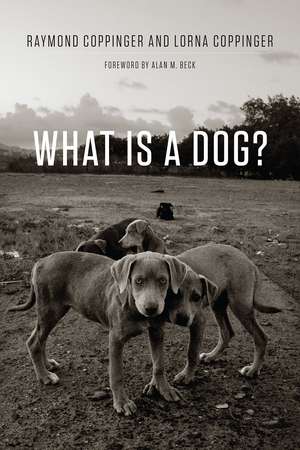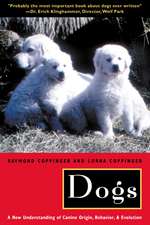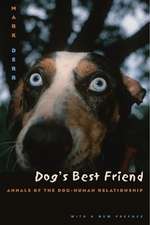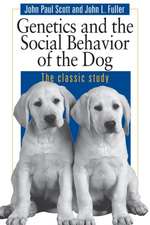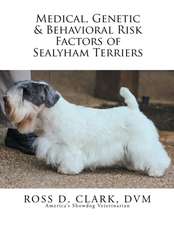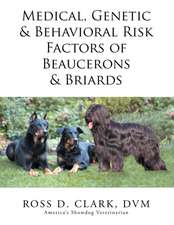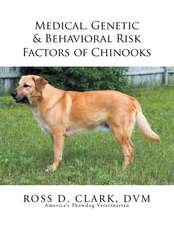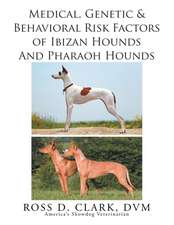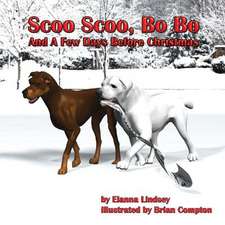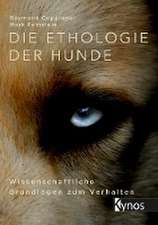What Is a Dog?
Autor Raymond Coppinger, Lorna Coppinger Cuvânt înainte de Alan Becken Limba Engleză Paperback – 7 mar 2017
Of the world’s dogs, less than two hundred million are pets, living with humans who provide food, shelter, squeaky toys, and fashionable sweaters. But roaming the planet are four times as many dogs who are their own masters—neighborhood dogs, dump dogs, mountain dogs. They are dogs, not companions, and these dogs, like pigeons or squirrels, are highly adapted scavengers who have evolved to fit particular niches in the vicinity of humans. In What Is a Dog? experts on dog behavior Raymond and Lorna Coppinger present an eye-opening analysis of the evolution and adaptations of these unleashed dogs and what they can reveal about the species as a whole.
Exploring the natural history of these animals, the Coppingers explain how the village dogs of Vietnam, India, Africa, and Mexico are strikingly similar. These feral dogs, argue the Coppingers, are in fact the truly archetypal dogs, nearly uniform in size and shape and incredibly self-sufficient. Drawing on nearly five decades of research, they show how dogs actually domesticated themselves in order to become such efficient scavengers of human refuse. The Coppingers also examine the behavioral characteristics that enable dogs to live successfully and to reproduce, unconstrained by humans, in environments that we ordinarily do not think of as dog friendly.
Providing a fascinating exploration of what it actually means—genetically and behaviorally—to be a dog, What Is a Dog? will undoubtedly change the way any beagle or bulldog owner will reflect on their four-legged friend.
Exploring the natural history of these animals, the Coppingers explain how the village dogs of Vietnam, India, Africa, and Mexico are strikingly similar. These feral dogs, argue the Coppingers, are in fact the truly archetypal dogs, nearly uniform in size and shape and incredibly self-sufficient. Drawing on nearly five decades of research, they show how dogs actually domesticated themselves in order to become such efficient scavengers of human refuse. The Coppingers also examine the behavioral characteristics that enable dogs to live successfully and to reproduce, unconstrained by humans, in environments that we ordinarily do not think of as dog friendly.
Providing a fascinating exploration of what it actually means—genetically and behaviorally—to be a dog, What Is a Dog? will undoubtedly change the way any beagle or bulldog owner will reflect on their four-legged friend.
Preț: 122.50 lei
Nou
Puncte Express: 184
Preț estimativ în valută:
23.44€ • 25.46$ • 19.69£
23.44€ • 25.46$ • 19.69£
Carte disponibilă
Livrare economică 01-15 aprilie
Preluare comenzi: 021 569.72.76
Specificații
ISBN-13: 9780226478227
ISBN-10: 022647822X
Pagini: 257
Ilustrații: 17 color plates, 13 halftones
Dimensiuni: 152 x 229 x 20 mm
Greutate: 0.4 kg
Ediția:1
Editura: University of Chicago Press
Colecția University of Chicago Press
ISBN-10: 022647822X
Pagini: 257
Ilustrații: 17 color plates, 13 halftones
Dimensiuni: 152 x 229 x 20 mm
Greutate: 0.4 kg
Ediția:1
Editura: University of Chicago Press
Colecția University of Chicago Press
Notă biografică
Raymond Coppinger is professor emeritus of biology at Hampshire College. Lorna Coppinger is a biologist and science writer. Their books together include Dogs: A New Understanding of Canine Origin, Behavior, and Evolution, also published by the University of Chicago Press.
Cuprins
Foreword by Alan M. Beck
Preface
Part 1 About Dogs
1 What Is a Dog?
2 The World Is Full of Village Dogs
3 Why Do Village Dogs All Look Alike?
4 What Is a Niche?
Part II Behavioral Ecology
5 Behavioral Ecology of Dogs
6 The Cost of Building a Dog
7 The Cost of Feeding a Dog
8 The Cost of Reproduction
9 Avoiding Hazards and Their Costs
Part III That Special Relationship between People and Dogs
10 The Symbiotic Relationship
11 Dogs Adopt People (and Other Animals)
12 People Adopt Dogs
13 People Breed Special Dogs
14 Breed Genes Stray into the Village Dog Population
15 Dog Genes Stray Back into the Wild
Part IV Summary
16 Where—and Why—Are All These Dogs?
17 What Should We Do—If Anything—with All the Dogs?
Bibliography
Index
Preface
Part 1 About Dogs
1 What Is a Dog?
2 The World Is Full of Village Dogs
3 Why Do Village Dogs All Look Alike?
4 What Is a Niche?
Part II Behavioral Ecology
5 Behavioral Ecology of Dogs
6 The Cost of Building a Dog
7 The Cost of Feeding a Dog
8 The Cost of Reproduction
9 Avoiding Hazards and Their Costs
Part III That Special Relationship between People and Dogs
10 The Symbiotic Relationship
11 Dogs Adopt People (and Other Animals)
12 People Adopt Dogs
13 People Breed Special Dogs
14 Breed Genes Stray into the Village Dog Population
15 Dog Genes Stray Back into the Wild
Part IV Summary
16 Where—and Why—Are All These Dogs?
17 What Should We Do—If Anything—with All the Dogs?
Bibliography
Index
Recenzii
“There are about a billion dogs on Earth, according to some estimates. The other 750 million don’t have flea collars. And they certainly don’t have humans who take them for walks and pick up their feces. They are called village dogs, street dogs and free-breeding dogs, among other things, and they haunt the garbage dumps and neighborhoods of most of the world. In their new book, What Is a Dog?, Raymond and Lorna Coppinger argue that if you really want to understand the nature of dogs, you need to know these other animals. The vast majority are not strays or lost pets, the Coppingers say, but rather superbly adapted scavengers—the closest living things to the dogs that first emerged thousands of years ago.”
“The dog is a shape that has evolved to a new niche that was created when people switched from hunting and gathering to growing grain. The waste products of that activity created a food supply that supports village dogs. So, according to the Coppingers, a dog is a kind of canid that has evolved to co-exist with humans — as a pet, a worker or a scavenger (or, in some cases, a combination of all three). Once they’ve spelt it out, it all seems fairly obvious. However, I never thought it through before, and now I see dogs in an entirely different light. Far from being a shameless stooge, Canis familiaris is actually a highly sophisticated scrounger. Seems man’s best friend is a lot smarter than we all imagined.”
“This is an informative, well-written book on the evolution of all canids, including the wild types (wolves, coyotes, jackals, and dingoes) and the ubiquitous and diverse domestic dogs. . . . Recommended.”
“From their decades of research, the Coppingers have given us yet another epic book about dogs. The Coppingers take a unique and intensive look at the biology and population genetics of Canis familiaris, the niche that dogs occupy, and the problems that they face cohabitating with man. A must read for anyone really interested in knowing this animal that many call ‘man’s best friend’!”
“If you thought you knew what a dog was, better check this book out. The Coppingers explore the domestic dog in relation to its wild relatives in a way only these authors can. You’ll visit such places as Istanbul, Mexico City, South Africa, and Baffin Island and also learn about such non-dogs as pigeons, vultures, codfish, and hummingbirds. Didn’t know about the dog’s ecological niche? Its behavioral ecology? Its symbiotic relationships? The Coppingers will fill you in and forever make you more appreciative of your pet’s complexity.”
“Dogs are an immensely popular subject, and hundreds of books have been written on every aspect of their biology and relationships with humans. So, it is hard to believe that anything new could be said, but this book proves that there might be much more to their science than we currently know. The Coppingers’ new book is deeply innovative, and it challenges, with remarkable clarity and compelling examples, the established ‘dogmas’ of the origin of dogs and their dependence on humans. It is beautifully written and rich with original perspectives. There is no doubt that this book will force us to rethink our relationship with dogs.”
“In What Is a Dog?, the follow-up volume to their thought-provoking 2001 book Dogs: A New Understanding of Canine Origin, Behavior, and Evolution, biologist team Raymond and Laura Coppinger continue to turn re-evaluative insights on these deceptively familiar creatures. The question that makes up the title of their new book is by no means rhetorical. . . .The Coppingers make a convincing case that goes well beyond the standard paleolithic-man-tames-wolf-cubs scenario presented in every textbook in the world about the phylogeny of dogs. Their study looks at “the pervasive dogs of the world” with fresh eyes.”
